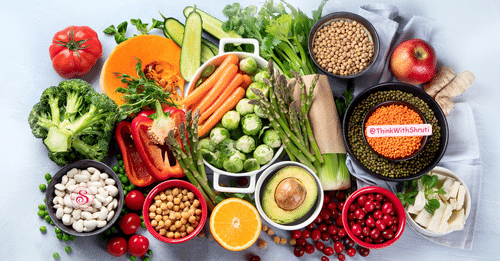The world of diets and nutrition is a labyrinth filled with numerous trends and fads, each promising the elusive key to health and vitality. The Plant Paradox Diet is one such regimen that has gained both popularity and notoriety in recent years. But what is the Plant Paradox Diet? Is it a revolutionary path to better health, or is it just another dietary illusion? Let’s embark on a journey to explore the ins and outs of this diet, its principles, potential benefits, and areas of concern.
Understanding the Plant Paradox Diet
The Plant Paradox Diet is a restrictive eating plan that eliminates lectins, a type of protein found in many plants. Proponents of the diet claim that lectins are harmful to human health and can contribute to various health problems, including weight gain, inflammation, and autoimmune diseases.
The diet was popularized by Dr. Steven Gundry, a former cardiac surgeon, in his 2017 book “The Plant Paradox.” Gundry argues that lectins are a defense mechanism used by plants to protect themselves from predators. When humans consume lectins, he claims, they can disrupt gut health, leading to a range of health issues.
Key Principles
The Plant Paradox Diet has several core principles:
1. Avoid Lectin-Rich Foods: The diet encourages the avoidance of foods high in lectins. This includes grains, legumes, certain vegetables (like tomatoes, peppers, and eggplants), and some fruits (like bananas).
2. Embrace Low-Lectin Foods: The diet promotes foods that are low in lectins, such as leafy greens, cruciferous vegetables, and pasture-raised meat.
3. Prioritize Healthy Fats: Healthy fats from sources like avocados and olive oil are encouraged.
4. Promote Gut Health: The diet emphasizes the importance of gut health, suggesting the use of probiotics and prebiotics to support a healthy gut microbiome.
5. Time-Restricted Eating: Intermittent fasting, or time-restricted eating, is sometimes incorporated to enhance the diet’s potential benefits.
Also read: 30-30-30 Rule (Diet) for Weight Loss. All You Need to Know Kelly Clarkson
Foods to avoid on the Plant Paradox Diet include:
- Legumes: beans, lentils, peanuts, soybeans
- Nightshade vegetables: eggplants, peppers, potatoes, tomatoes
- Grains: wheat, rice, corn, oats
- Certain fruits: apples, grapes, strawberries
- Dairy products: milk, cheese, yogurt
- Certain oils: corn oil, soybean oil, sunflower oil
The Potential Benefits
Proponents of the Plant Paradox Diet claim that it can lead to various health benefits, including weight loss, reduced inflammation, and improved digestive health. The emphasis on whole foods, healthy fats, and gut health aligns with principles supported by many experts in the field of nutrition.
The diet’s lectin-avoidance approach might be beneficial for individuals with certain digestive issues or autoimmune conditions. Research on lectins and their impact on health is still evolving, and some people do report positive outcomes when following a lectin-restricted diet.
Also read: What Are the Real Good Health Indicators? Exploring the Evolving Definition of Obesity
Areas of Concern
While the Plant Paradox Diet has garnered attention, it’s not without criticism. The concept of lectins as a dietary evil is not universally accepted in the scientific community. Critics argue that many lectin-rich foods are packed with essential nutrients and can be part of a balanced diet.
Eliminating entire food groups, such as legumes and whole grains, might lead to nutritional deficiencies if not carefully planned. Additionally, lectin-avoidance can be challenging to maintain in the long term.
The Bottom Line
The Plant Paradox Diet, with its focus on lectins and gut health, offers a unique perspective on nutrition. It may provide benefits for some individuals, particularly those with specific health concerns related to lectins. However, it’s essential to approach this diet with caution and consult with a healthcare professional or registered dietitian before making significant dietary changes.
In the ever-evolving world of nutrition, there is no one-size-fits-all approach. The best diet is one that aligns with your individual health goals and needs, and that includes a wide variety of nutrient-rich foods. Always remember that balance and moderation are key to a healthy lifestyle.
With the Plant Paradox Diet, as with any dietary plan, the key is to be well-informed and make choices that work best for your unique journey toward better health.
Also read: Three Behavioural Changes for Sustainable Fat Loss
References
- Gundry, S. R. (2017). The Plant Paradox: The Hidden Dangers in “Healthy” Foods That Cause Disease and Weight Gain. Harper Wave. Link
- Thompson, S. V., Winham, D. M., & Hutchins, A. M. (2015). Bean and legume consumption is associated with higher nutrient intake, reduced risk of chronic diseases, and lower body weight in US adults: data from the National Health and Nutrition Examination Survey 2007–2010. The Journal of the Academy of Nutrition and Dietetics, 115(12), 1818-1827. Link

